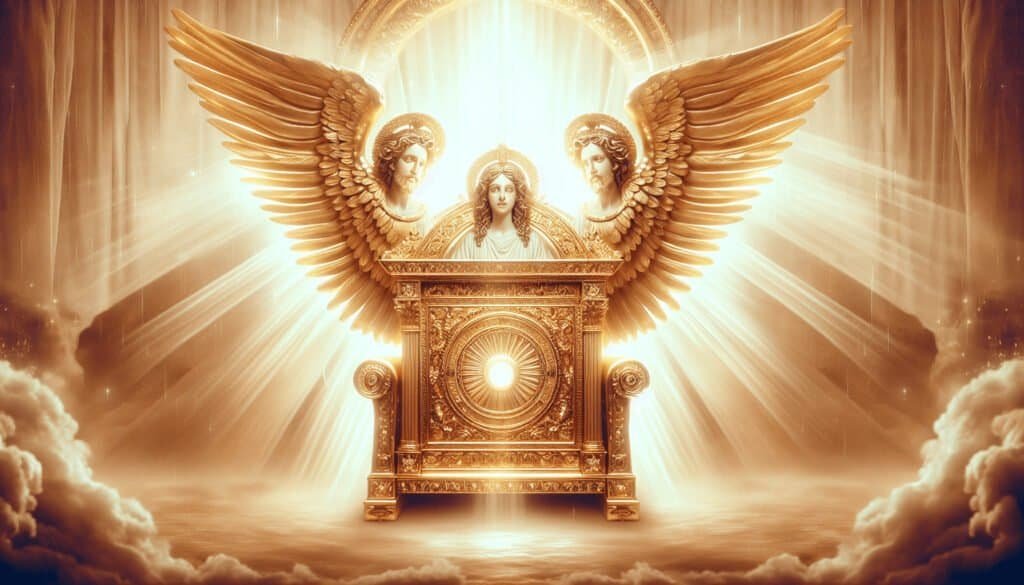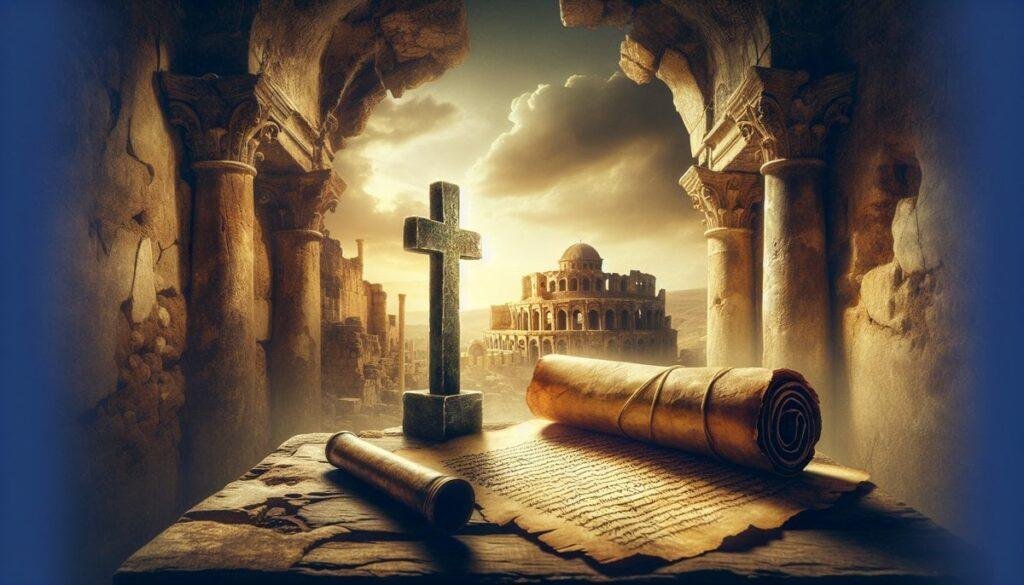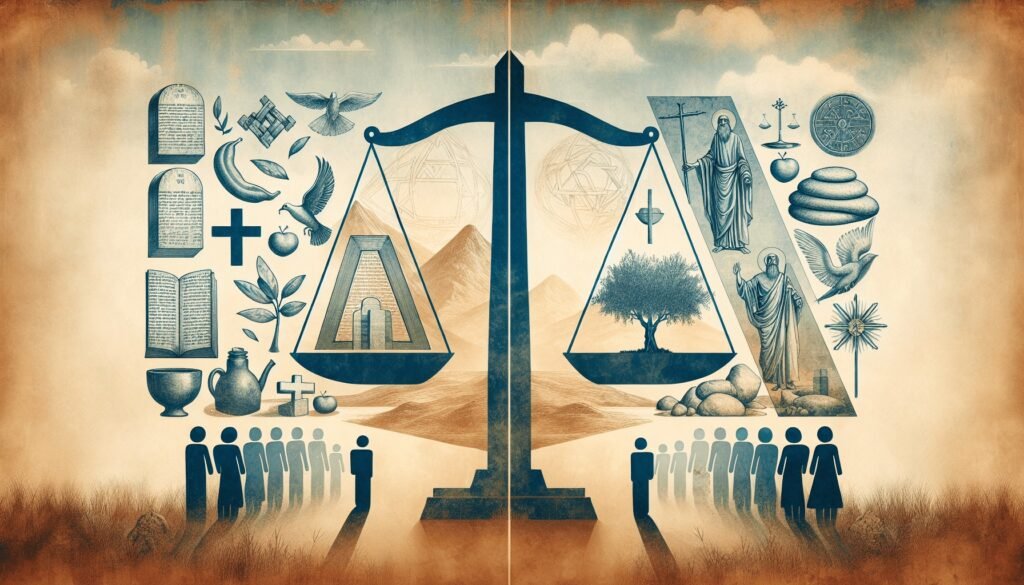What if you could step into a realm where the divine and the earthly intertwined? The ancient world is rich with symbols, and among the most captivating is the Ark of the Covenant, particularly its striking lid, often referred to as the Cherubim Throne. This isn’t just a piece of relic but a powerful gateway that beckons exploration. So, let’s take a closer look at the nuances and significance of this ancient artifact.
Understanding the Ark of the Covenant
The Ark of the Covenant isn’t merely a biblical artifact; it serves as a historical representation of a profound relationship between divine presence and humanity. According to biblical texts, it housed the stone tablets inscribed with the Ten Commandments—a testament to God’s covenant with the Israelites. When you think of ancient Israel, envision a portable shrine guiding a nomadic population toward spiritual fulfillment.
Historical Context
To appreciate the Ark’s significance, it helps to place it within its historical context. Crafted during the time of Moses, approximately 3,300 years ago, this sacred chest was designed to represent God’s presence among His people. The Israelites believed that the Ark was the physical manifestation of God’s promise and guidance. Tangible and yet shrouded in mystery, it traveled with the Israelites through their wilderness wanderings.
Cultural Significance
The Ark held immense cultural value for the Israelites, functioning as a focal point of their worship. Its creation instructions appear in Exodus 25:10-22, emphasizing meticulous craftsmanship. The detailed descriptions of the Ark’s dimensions, materials (acacia wood, gold, etc.), and, notably, the cherubim figures atop it, suggest that it served as more than a physical object; it was integral to their identity and belief system.
The Lid of the Ark: The Cherubim Throne
Now, turn your attention to the lid of this remarkable artifact. Commonly referred to as the Mercy Seat, the lid features two cherubim facing each other, their wings outstretched, creating a sacred space in the center. These celestial beings are often depicted as protectors and messengers, reinforcing the notion of the Ark as a conduit between the earthly realm and the divine.
What are Cherubim?
Cherubim are often confused with cute little cupids or chubby cherubs strumming harps in art and culture, but biblically, they are much more complex. These angelic beings are guardians of sacred knowledge and divine presence. In the context of the Ark, they represent God’s royal court, marking the space where heaven and earth meet—a place of communication between God and His people.
Design Details
Let’s get into the nitty-gritty of the lid’s design. The craftsmanship is truly astounding; the cherubim’s wings reach up and touch, enveloping the presence of God in a protective embrace. The artistry is steeped in symbolism, suggesting both the complexity of divine presence and the simplicity of faith.
Here’s a quick breakdown of the characteristics:
| Characteristic | Description |
|---|---|
| Dimensions | Approximately 2.5 cubits long (about 45 inches) and 1.5 cubits wide (about 27 inches) |
| Materials | Constructed from acacia wood overlayed with gold |
| Cherubim Positioning | Facing each other with wings extended upward |

Theological Implications
The significance of the Cherubim Throne goes far beyond aesthetics. Theologically speaking, it is viewed as a critical intersection of the covenant relationship. The Mercy Seat symbolizes God’s mercy and presence, a location where heavenly grace meets earthly sinfulness.
Communication with God
In Leviticus 16:2, God instructs Aaron to approach the Mercy Seat with caution, highlighting the sacredness of this space. The high priest would enter the Holy of Holies, where the Ark was housed, once a year on Yom Kippur, to atone for the sins of the people. This illustrates a profound understanding of mediation: the Ark and its lid serve as a bridge, allowing direct communication with God—while balancing reverence and relational intimacy.
Symbol of Authority
You can’t overlook how the Ark symbolizes divine authority. When it was present, the Israelites believed they held God’s favor. In battles, the Ark was carried as a symbol of sovereignty and conquest. This led to historical moments recorded in Joshua 3-6 concerning the fall of Jericho, emphasizing the vital role of the Ark in their military campaigns.
The Ark in Archaeological Context
The Ark’s historical significance cannot be overstated, and it has sparked considerable interest among archaeologists. While none have definitively located it, various findings provide insights into its likely resting places, notably in Jerusalem or even elsewhere in Ethiopia, as some traditions suggest.
Archaeological Discoveries
Several archaeological sites have uncovered artifacts that may correlate with the Ark’s history and use:
Mount Sinai: Some believe this site corresponds to biblical accounts, where the Ark was initially created. Remains of ancient altars and inscriptions have been found, suggesting it was a significant religious center.
City of David: Excavations in Jerusalem have unearthed potential locations for the Ark. However, no direct evidence has confirmed its presence, lending itself to ongoing speculation.
Historical Texts
Apart from the biblical narrative, historical texts from ancient civilizations can provide helpful context regarding the Ark’s significance. Ancient Near Eastern cultures often shared motifs involving divine thrones and sacred spaces, and comparative studies reveal the universal yearning for connection with the divine.

Modern Perspectives on the Ark
Fast forward to the present, and the Ark continues to capture imagination—a display of humanity’s quest for the sacred. The narrative surrounding it weaves through theology, literature, and cultural mythology, remaining relevant.
Symbolism in Modern Religion
Many modern religious groups regard the Ark as a symbol of God’s enduring covenant. Whether considered a literal object of faith or a representative piece, its essence remains influential.
Cultural References
From Indiana Jones to various art forms and even in modern literature, the Ark’s allure remains irresistible. You see it in numerous adaptations, where its power and mystery are explored, often symbolizing the search for divine truth.
The Cherubim Throne’s Place in Art and Literature
The striking imagery of the cherubim has inspired artists and writers through centuries. Not just limited to religious art, the Throne’s symbolism appears in various contexts:
- Literature: Authors have drawn on the Ark’s fabric, using it as a motif to discuss faith, authority, and the human condition.
- Art: In Renaissance art, the imagery of cherubim has been transformed, allowing artists to capture the spirituality and majesty associated with the divine.
Insights from Theology and Philosophy
Though the Ark and the Cherubim Throne stem from ancient beliefs, their implications stretch across time into modern theology and philosophy. What does it mean to seek connection with the divine? Can one find the sacred in the earthly?
Philosophical Reflections
In philosophy, the debate surrounding the nature of divine connection often pivots around the material versus the immaterial. The Ark, as a physical representation of God’s covenant, raises significant questions about the nature of religious experience, moving past rituals into deeper understanding.
Contemporary Theological Frameworks
Modern theologians continue to grapple with the implications of biblical events. Debates surrounding the literal versus metaphorical interpretations of the Ark allow for a rich dialogue that bridges ancient texts and contemporary spirituality.
- Covenantal Relationships: These discussions underscore the ongoing relevance of covenantal relationships today, emphasizing that followers still seek connection and understanding, much like the Israelites of old.
Conclusion: A Bridge Between Realms
Ultimately, the Cherubim Throne serves as a profound intersection of heaven and earth—the physical representation of a connection deeply rooted in belief, culture, and history. Its artistic and theological richness highlights the human longing for the sacred, echoing through the ages. The Ark of the Covenant signifies much more than an ancient artifact; it remains a gateway for discussions about faith, connection, authority, and the divine.
As you explore this ancient relic, consider what it means for your life today. How do these narratives translate into your spiritual journey? The inquiry you embark upon may reveal connections to personal and collective histories, binding you closer to the shared essence of humanity’s eternal pursuit of the sacred.


